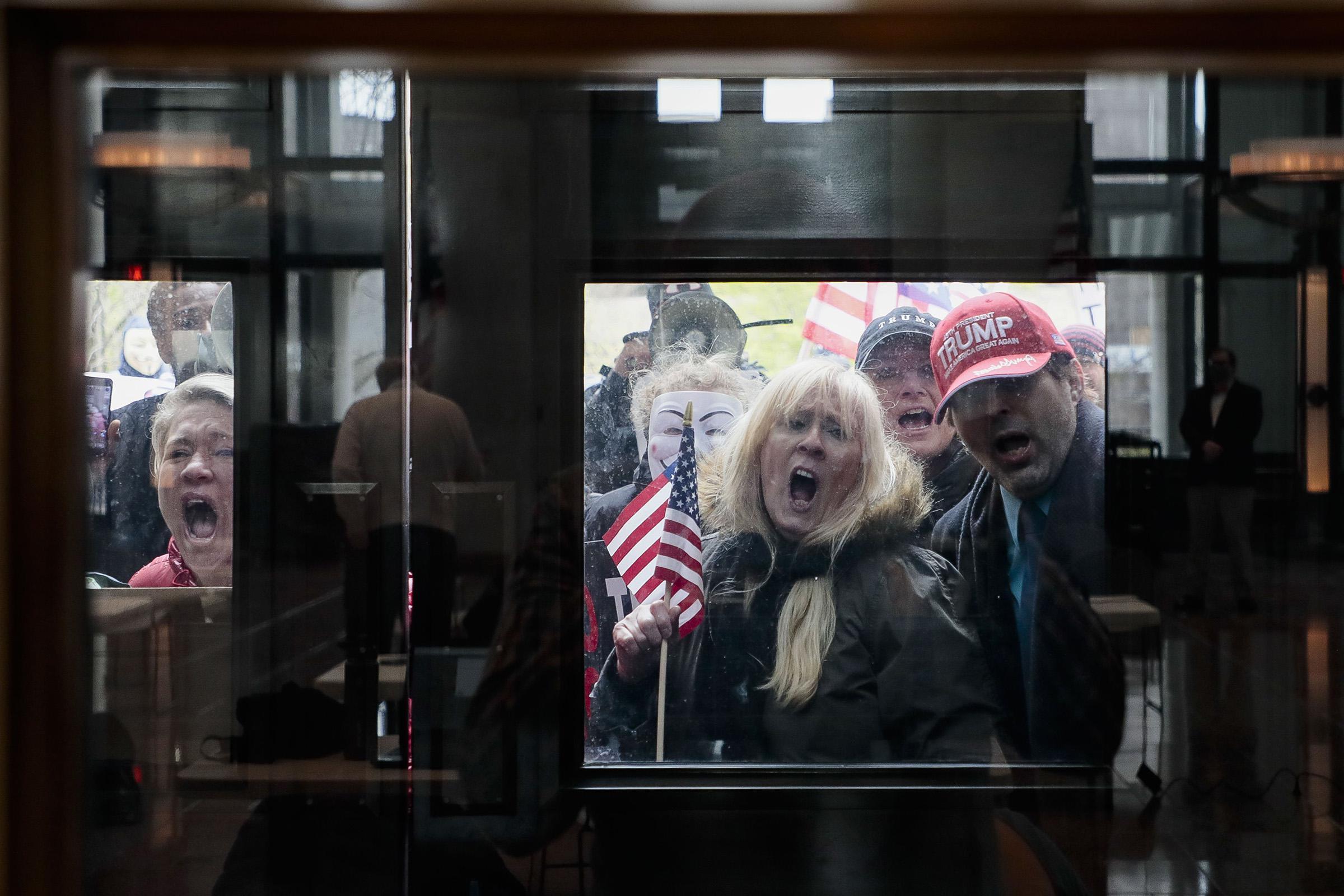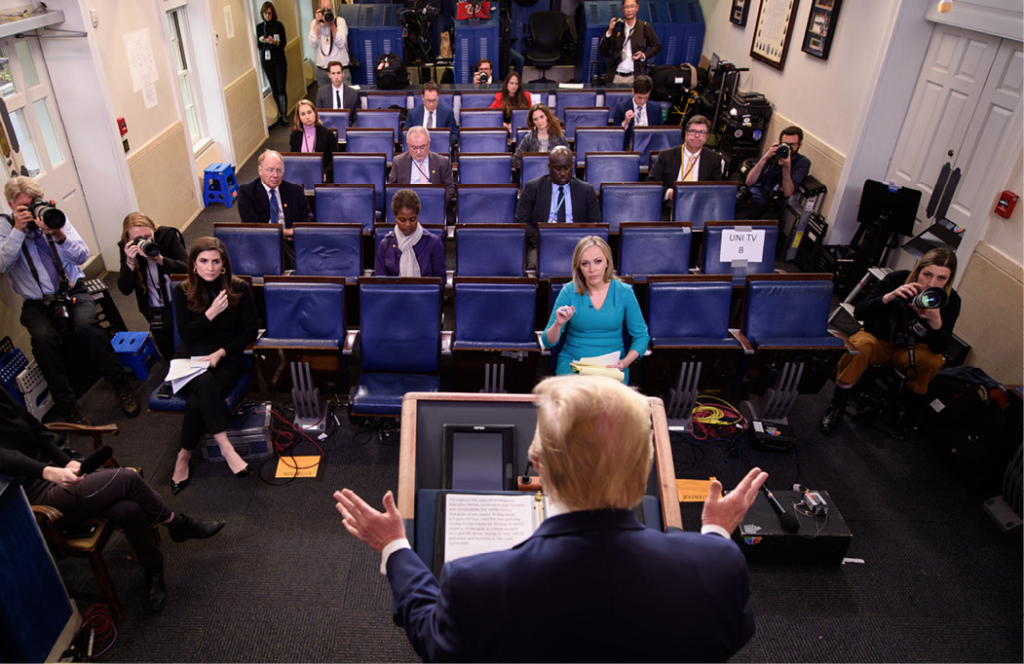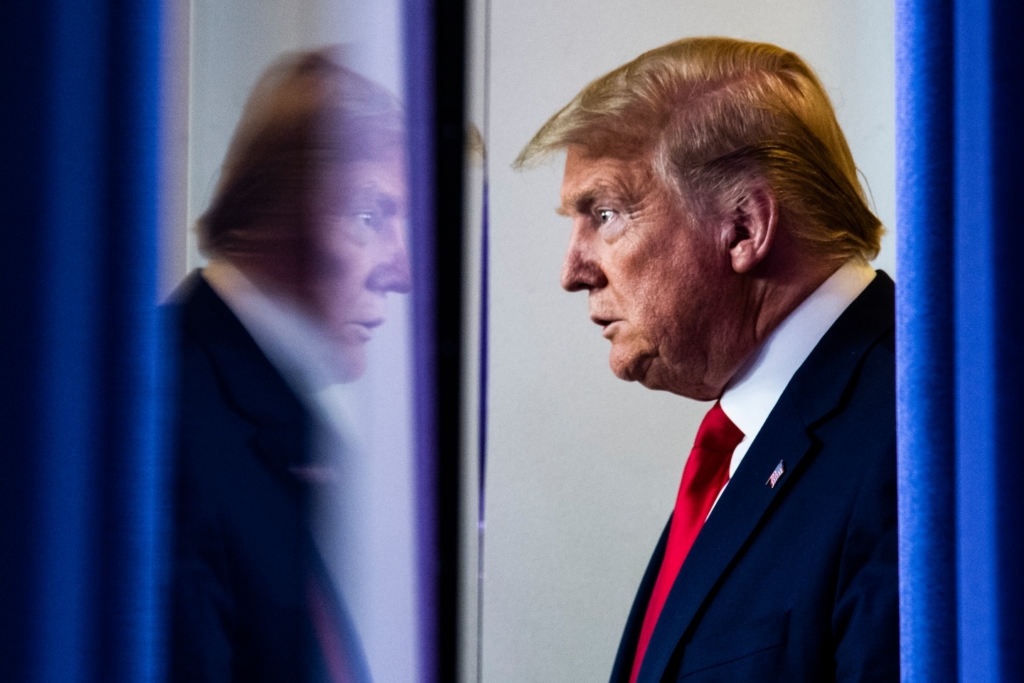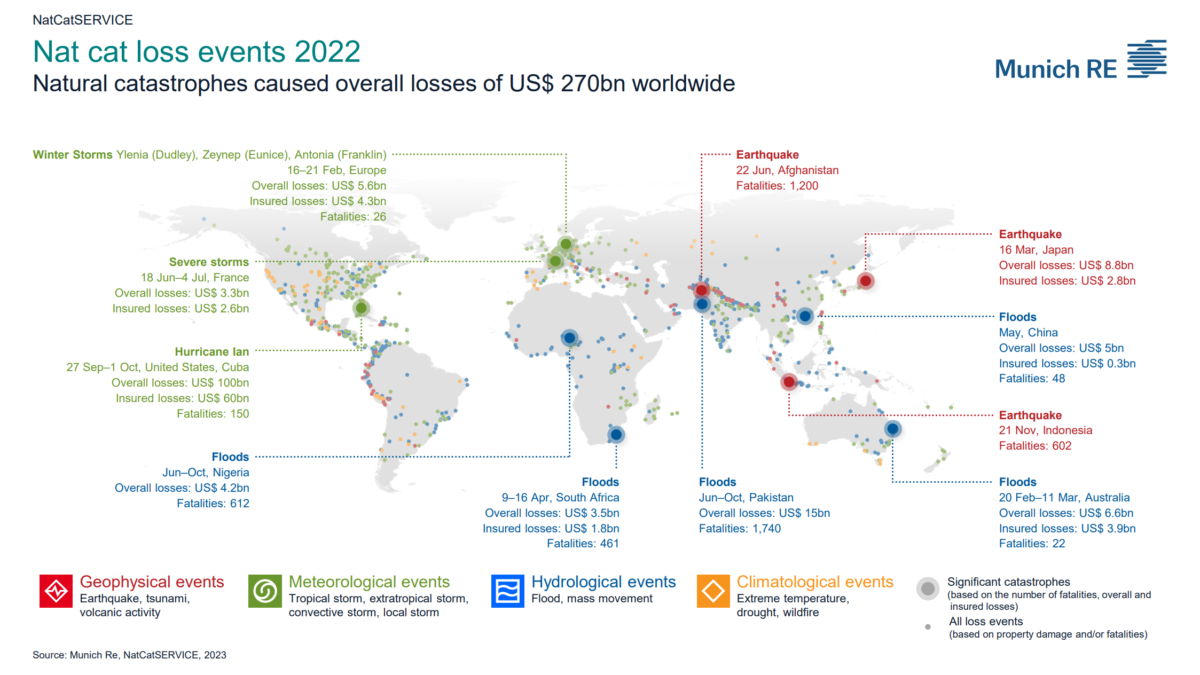Attacks on press credibility endanger U.S. democracy and global press freedom

WASHINGTON, D.C., 16 April 2020 (CPJ) – When President Donald J. Trump initially minimized the danger of the COVID-19 virus in the first two months of 2020, he attacked news media reporting about the growing threat and his administration’s slow response. “Low Ratings Fake News MSDNC (Comcast) & @CNN are doing everything possible to make the Caronavirus look as bad as possible, including panicking markets, if possible,” the president tweeted on 26 February 2020, implying that MSNBC is allied with the Democratic Party.
On 8 March 2020, after more press reports about shortcomings in the administration’s response, Trump tweeted, “The Fake News Media is doing everything possible to make us look bad. Sad!” The next day, after the Dow Jones Index lost 2,014 points, or 7.79 percent, of its value, the president also blamed it on “fake news.” In an 18 March 2020 tweet, Trump insisted, “I always treated the Chinese Virus very seriously” and “the Fake News new narrative is disgraceful & false.” At contentious White House COVID-19 press briefings on March 19 and 20, he again angrily attacked the news media, saying that “the press is very dishonest” in its reporting on his handling of the crisis and that journalists “truly do hurt our country.”
It was all typical of the Trump presidency’s unprecedented hostility toward the press. Trump has habitually attacked the news media in rallies, responses to reporters’ questions, and many hundreds of tweets. He has repeatedly called the press “fake news,” “the enemy of the people,” “dishonest,” “corrupt,” “low life reporters,” “bad people,” “human scum” and “some of the worst human beings you’ll ever meet.” As Trump told Leslie Stahl of CBS News shortly after he was elected president in 2016, he has been trying to destroy the credibility of the news media’s reporting about him.

“I believe that President Trump is engaged in the most direct sustained assault on freedom of the press in our history,” Fox News anchor Chris Wallace said at a Society of Professional Journalists press freedom event in Washington on 11 December 2019. “He has done everything he can to undercut the media, to try and delegitimize us, and I think his purpose is clear: to raise doubts, when we report critically about him and his administration, that we can be trusted.”
In response to Trump’s steady stream of verbal attacks, members of the press were regularly booed at Trump rallies, and reporters named in his tweets have been repeatedly harassed online. There also have been credible threats to news organizations, with CNN frequently targeted.
The president’s press secretaries, other White House aides and administration officials, along with Trump’s allies in Congress also repeatedly attacked the press, often parroting the president’s language. Along with Trump’s thousands of documented false statements and his promotion of discredited conspiracy theories, the administration’s attacks on the credibility of the news media have dangerously undermined truth and consensus in a deeply divided country.

“We now have some of the best news organizations that the world has known,” said Paul Steiger, former editor of The Wall Street Journal, founder of the ProPublica nonprofit news organization, and former chair of Committee to Protect Journalists’ board of directors. “But Trump has created a climate in which the best news, most fact-checked news is not being believed by many people.”
The Trump administration has threatened the work of the American press in other ways. The Justice Department has stepped up investigations and prosecutions of journalists’ sources of classified government information, while Trump and his attorneys general have refused to rule out prosecuting reporters themselves. The Customs and Border Protection (CBP) agency has questioned journalists at border posts, searched their electronic devices, and monitored their movements in a secret database.
Trump himself has called for boycotts of news organizations and changes in libel law to punish the press. His re-election campaign sued The New York Times, The Washington Post, and CNN for libel for opinions expressed by their columnists and contributors. He tried unsuccessfully to take away White House press credentials from journalists and news organizations whose questions and stories he did not like. He encouraged federal government interference in the businesses of the owners of CNN, the traditional broadcast networks, and The Washington Post. [more]
Attacks on press credibility endanger US democracy and global press freedom


